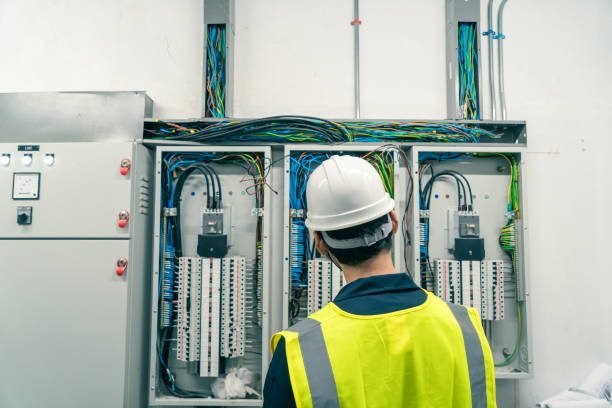When you walk into a hospital, chances are you’re not thinking about the wiring behind the scenes. You’re focused on care, on safety, on answers. But there’s a quiet force behind that smooth experience—healthcare electrical contractors in London. These specialists are the unsung heroes ensuring the lighting fixtures live on throughout surgeries, that equipment is well grounded, and that every unmarried socket, switch, and circuit meets a number of the strictest standards within the UK. Sounds like a tall order?
Hospitals and clinics aren’t your average buildings. The stakes are higher. One power blip can disrupt critical care. So, compliance isn’t just a field-ticking workout—it’s a count of life and loss of life. That’s why HTM (Health Technical Memorandum) and NHS standards exist: to shield sufferers, groups of workers, and the integrity of care environments. And healthcare electricians are at the front line, translating those policies into actual-international answers.
So, What’s the Deal with HTM and NHS Electrical Standards?
Let’s not sugarcoat it—HTM guidance can be dense. We’re talking pages upon pages of detailed specifications for everything from emergency lighting to fire safety and isolation panels. These documents don’t just say “Install a light here.” No, they dive deep: into how it should be installed, which materials are acceptable, and even how far it should be from the patient’s bed.
And the NHS? Well, they don’t play around. Hospitals under their umbrella must meet very specific guidelines to ensure consistent safety and functionality across facilities. Electrical systems, especially in clinical areas, must adhere to these standards. There’s no cutting corners when lives are on the line.
Here’s the kicker: HTM compliance isn’t static. It evolves with technology, patient needs, and modern care environments. That means healthcare electrical contractors in London need to stay on their toes—constantly updating their knowledge and techniques to remain compliant.
How Do Contractors Make Sure They Stay on Track?
It’s not just about knowing where to plug in what. The top healthcare electricians work with a blueprint in mind—literally and metaphorically. They start by:
- Studying HTM Guidelines: Yes, it’s homework, but necessary. Contractors must understand the nitty-gritty of HTM 06 (electrical services safety), HTM 05 (fire safety), and more.
- Ongoing Training: Technologies change. So does best practice. Reliable contractors invest in continuous training—because yesterday’s knowledge might not meet tomorrow’s standard.
- Collaboration with NHS Trusts and Designers: These pros don’t work in silos. They liaise with facility managers, architects, and healthcare planners to ensure electrical systems complement clinical operations.
- Testing and Commissioning: Before any system goes live, it’s put through rigorous testing. Load checks, insulation resistance, earthing—every parameter is verified. If something’s off, it’s fixed before it becomes a problem.
- Documentation (Lots of It): Meticulous record-keeping is part of the job. That means installation certificates, testing results, and maintenance logs—all tracked and updated to remain audit-ready.
Real Talk: The Everyday Challenges
Let’s not pretend it’s always smooth sailing. Working in a live hospital environment brings a bag of headaches. Shutting down power in a ward? Not ideal. That’s why experienced contractors know how to work flexibly—scheduling downtime during nights or coordinating with staff to avoid disruption.
Ever had to squeeze a cable run behind a 30-year-old MRI suite without messing with existing setups? Ugh, it’s a puzzle. But that’s where the right team shines.
Even small clinics present challenges. A local electrician in Hockley working on a GP’s surgery still has to meet the same HTM standards. It’s not about the size of the job—it’s about the scope of responsibility. Whether it’s replacing light fittings in a consultation room or installing new isolation transformers in a mental health unit, the same attention to detail applies.
So Why Not Just Hire a General Electrician?
Here’s the thing: general electricians are great—at domestic and commercial installs. But healthcare is a different beast. There are specific risks: micro shocks to patients, electromagnetic interference with equipment, and strict zoning around patient treatment areas.
Healthcare electrical contractors are trained to navigate these unique requirements. They understand risk assessments. They know how to install essential and non-essential power systems separately. And most importantly, they won’t flinch when they hear “HTM 06-01 compliance.”
The Personal Side of the Job
I once spoke with a contractor who’d been called in to sort out a faulty emergency lighting system in a maternity ward. It wasn’t just another job to him. “I’ve got kids,” he said. “I know how scary it can be for new mums. You don’t want them in the dark—literally or figuratively.” That stuck with me. It reminded me that behind the tech specs and compliance checklists are real people, doing meaningful work.
And honestly, that’s what sets the good ones apart. They care. Not just about the installation, but about the impact. Whether it’s a large London hospital or a small community clinic in Essex, the best healthcare electricians take pride in their role in patient safety.
Final Thoughts
In a world where healthcare systems are under constant pressure, having the right electrical contractors on board is non-negotiable. They don’t just run cables and flip switches. They ensure that hospitals and clinics run safely, efficiently, and in full compliance with HTM and NHS standards.
So next time you’re sitting in a waiting room with perfectly functioning lights, quietly humming machines, and clear emergency signage—just know, that didn’t happen by accident. Somewhere, a healthcare electrical contractor in London made it happen.
And if you’re a facility manager looking for a trustworthy electrician in Hockley for a medical facility—do yourself a favour: make sure they speak fluent HTML.

